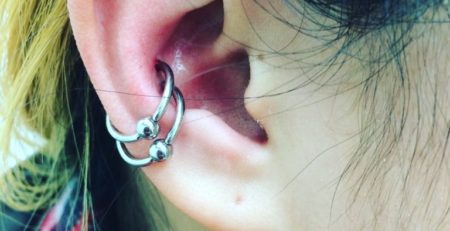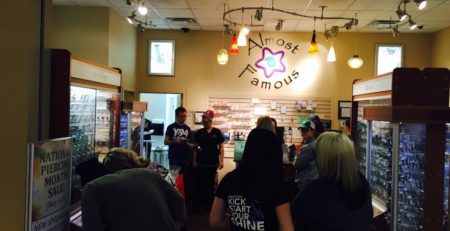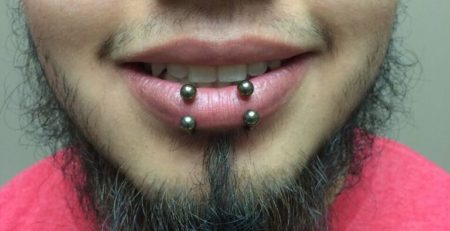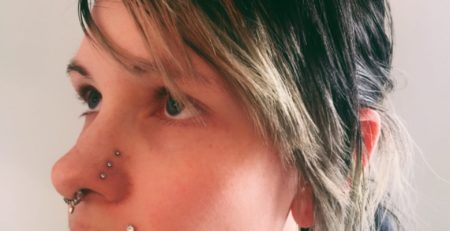Single Point Piercings
Currently a very popular piercing, single point piercings (also known as dermals or dermal anchors) have gained popularity in the last few years. The best thing about the most recent version of dermal anchor jewelry is the ability to change the tops without removing the bottom of the jewelry that is below the skin surface. When dermals were first developed, the gem was not a separate piece, and could not be changed unless you removed the entire piece of jewelry.
Dermal Placement
Dermals can be placed in many areas on the body, but will heal best in areas where the skin is of moderate thickness. Successful areas include the lower back, the cheekbone, along the collarbone, the back of the neck, the hip, and the sternum. Other popular areas include the back of the wrist and fingers, but the potential for catching the jewelry on clothing or some other object is high.
In our experience, dermal bottoms (or boots) that are made of titanium heal more quickly and with fewer healing problems. One of the main difficulties with dermal piercings is they can be located on areas of the body where it is hard for you to see the piercing, let alone take care of it! Make sure you have someone else look at your piercings for you if you can’t see them well. This will help greatly in the healing process because you will be able to catch any developing problems much more quickly.
Dermal Piercing Aftercare
To do a sea salt soak on your piercing, it is often helpful to use a soaker bottle. Mix the salt solution in the bottle and put on the top. Using gentle pressure on the bottle, squeeze the solution over the piercing. You can also soak using a clean paper towel or gauze pad saturated with salt solution and hold over the piercing site. Make sure to change the pad two or three times during the soak time.









